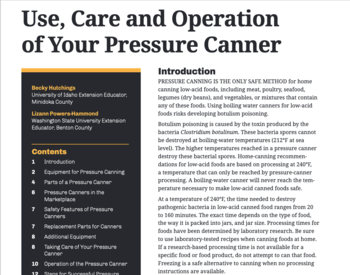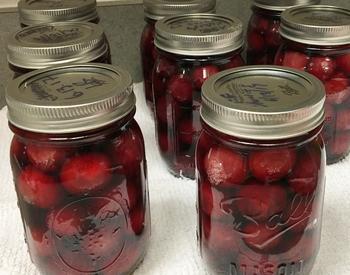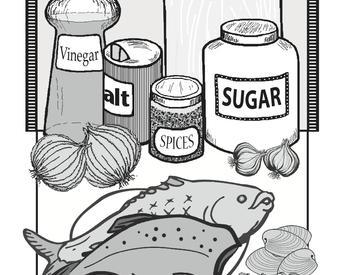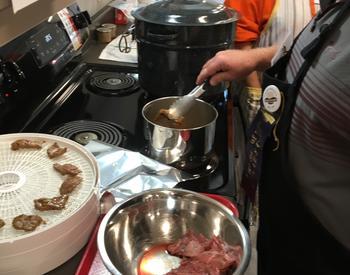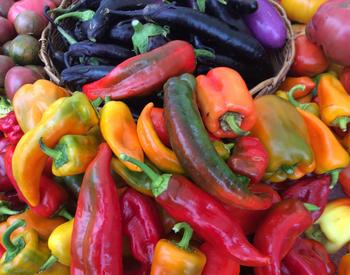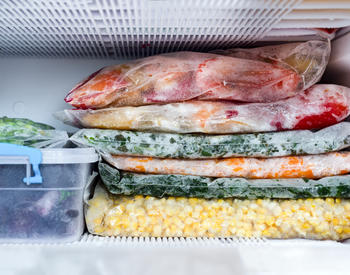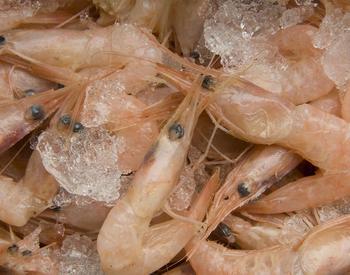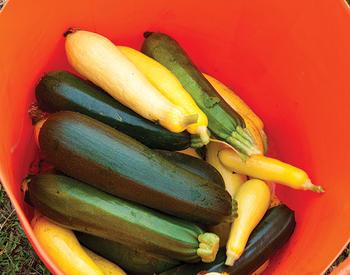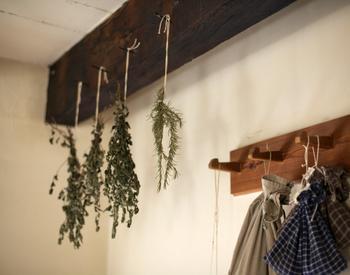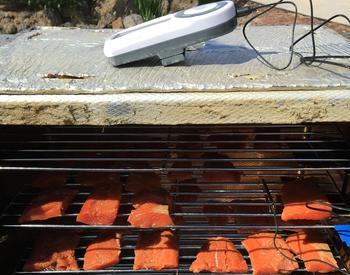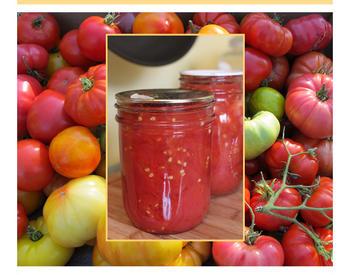Download this publication as a PDF
Horseradish is a pungent condiment used with meats and fish and added to sauces such as seafood sauce and spicy catsup. It’s a member of the mustard family. The two most common varieties are New Bohemia and Maliner Kren.
Horseradish needs a climate where the fall and winter are fairly cold. The stout taproots don’t develop until cold weather has encouraged the plant to begin to store starch. The best roots are those that have endured several frosts.
Harvesting
To harvest, loosen the soil with a spade or fork and then lift the roots by hand. Remove the tops and side shoots. Since horseradish tends to take over the garden, it’s important to dig all the root at harvest time.
The roots can be stored in moist sand or sawdust in a cool dark cellar, or buried in outdoor pits. The root may also be mulched heavily and left in the ground for use over the winter. The harvested roots can also be stored, sand and all, in a plastic bag and stored in the refrigerator.
Preserving and using horseradish
Basic Horseradish Relish (Yield: about 2 half pints)
- 2 cups (¾ pound) freshly grated horseradish
- 1 cup vinegar
- ½ teaspoon canning salt
- ¼ teaspoon powdered ascorbic acid (optional)
Wash horseradish roots thoroughly and peel off brown outer skin. The peeled roots can be grated in a food processor or cut into small cubes and put through a food grinder. They can be mixed with the vinegar and chopped in a blender for the desired consistency. Combine ingredients and fill clean jars, leaving ¼ inch headspace. Seal jars tightly and store in the refrigerator.
Note: Horseradish fades and loses its pungency within 1–2 months, even when stored in the refrigerator. It’s therefore advisable to store roots in a cool place and make the relish in small quantities that can be consumed within 1–2 months.
Horseradish-Tomato Relish (Yield: 4-5 pints)
- 3 quarts peeled, chopped tomatoes
- 1½ cups vinegar (5% acidity)
- ¾ cup light brown sugar
- 2 tablespoons salt
- 1 teaspoon ground allspice
- ½ teaspoon cinnamon
- ½ teaspoon cloves
- 3 tablespoons mustard seed
- 1 tablespoon dill seed
- ¾ cup freshly grated horseradish
- 1–2 hot chili peppers
- 1 cup chopped onion
- 1 cup chopped celery
Chop tomatoes. Combine vinegar, sugar and spices, bring to a boil. Add tomatoes, peppers, onion and celery and simmer 15 minutes. Pack into hot pint or half-pint jars and process in a boiling water canner 15 minutes. After processing, take canner off heat. Remove lid. Wait 5 minutes before removing jars.
To dry
Note: Horseradish will smell extremely strong while it is drying. It’s best to put the dryer away from the living area, either on a porch or in the garage.
Select fresh, firm, fully mature roots for drying. Trim tops and scrub roots with a brush. Grate coarsely or slice into 1/4-inch thick slices.
Place on dryer sheets. Cover trays with plastic wrap or roll up sheets for grated horseradish. Dry until the horseradish is dry and brittle.
Store in a cool, dry, dark place in a container with a tight-fitting lid.
Dried horseradish can be powdered by putting in a blender. Rehydrate the powder with a little water and add to cocktail sauce, fish and meat sauces, and salad dressings.
Source: OSU Master Food Preserver Program


